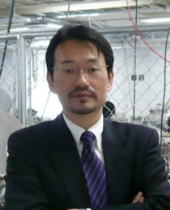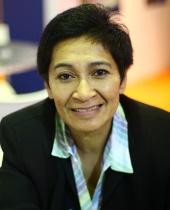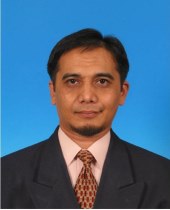| Speaker | Biography |
 Title: Nano-satellite Reliability and Standardization: Introduction of Lean Satellite Concept Title: Nano-satellite Reliability and Standardization: Introduction of Lean Satellite Concept
– Abstract |
Prof. Dr. Mengu Cho Mengu Cho received the B.S. and M.S. degrees from the Department of Aeronautics, University of Tokyo, Tokyo, Japan, in 1985 and 1987, respectively, and the P.hD. degree from the Department of Aero/Astro, Massachusetts Institute of Technology, USA, in 1992. From 1992 to 1995, he was a research associate with Kobe University, Kobe, Japan. From 1995 to 1996, he was a Teaching Associates with International Space University, France. Since 1996, he had been with Kyushu Institute of Technology (KIT), Japan, where he was an Assistant Professor in 1996 and Associate Professor in 1997. Since 2004, He has been a Professor and also the Director of the Laboratory of Spacecraft Environment Interaction Engineering (LaSEINE) of KIT. He has been with the Department of Applied Science for Integrated system engineering since 2010. His research interest includes spacecraft environmental interaction, especially spacecraft charging and nano-satellite reliability. He has authored or co-authored more than 120 papers in peer reviewed journals. |
 Title: Solving problems through space solutions Title: Solving problems through space solutions
– Abstract |
Datuk Dr. Mazlan Othman Obtained a Ph.D. in Astrophysics from the University of Otago, New Zealand, and became a lecturer at the Universiti Kebangsaan Malaysia (UKM) in 1981. Seconded to the Prime Minister’s Department in 1990 to set up and head the Planetarium Division, which subsequently became the Space Science Studies Division in 1993. Appointed by Universiti Kebangsaan Malaysia as Professor of Astrophysics in 1994. Appointed Director of the United Nations Office for Outer Space Affairs (OOSA) in Vienna, Austria in 1999. Returned to Malaysia to become the founding Director General of the National Space Agency (ANGKASA) beginning July 2002. Attended Advanced Management Programme at Harvard Business School in 2005. Resumed post as Director of OOSA in December 2007. Appointed Deputy Director-General of the United Nations Office at Vienna (UNOV) in June 2009. Retired from the UN December 2013. Currently Project Director Mega Science 3.0 at the Academy of Sciences Malaysia. |
 Title: Location Determination Techniques: From Large to Small Cells Title: Location Determination Techniques: From Large to Small Cells
– Abstract |
Prof. Dr. Mahamod Ismail Mahamod Ismail ([email protected]) joined the Department of Electrical, Electronics and System Engineering, Faculty of Engineering and Built Environment, Universiti Kebangsaan Malaysia (UKM) in 1985. He is the former Head of the Department and a Professor in Communication Engineering. He received the B.Sc. degree in Electrical and Electronics from University of Strathclyde, U.K. in 1985, the M.Sc. degree in Communication Engineering and Digital Electronics from University of Manchester Institute of Science and Technology (UMIST), Manchester U.K. in 1987, and the Ph.D. from University of Bradford, U.K. in 1996. He was with the first Malaysia Microsatellite TiungSat Team Engineers in Surrey Satellite Technology Ltd. U.K. from June 1997 until March 1998. In the summer semester 2003, he served as a Guest Professor in Computer Engineering in the University of Duisburg-Essen, Duisburg Germany funded by the German Academic Exchange Services (DAAD). His research interests include mobile and satellite communication, and wireless networking particularly on the radio resource management for the next generation wireless communication network. He is a Senior Member of the Institute of Electrical and Electronics Engineers (SMIEEE), USA and served as Chair of IEEE, Malaysia Section from 2011 to 2012. |
| Title: Satellites, Boats, and Planes, Trains, and Automobiles: Wireless Mobile Channel Characteristics Across the Vehicle-Scape
– Abstract |
Prof. Dr. David Matolak David Matolak is a Professor in the Department of Electrical Engineering, University of South Carolina. He has over 20 years of experience in research, design, development, and deployment of wireless communication systems for terrestrial, satellite, and aeronautical applications. He has worked for AT&T Bell Laboratories, MITRE, L3 Communications, Lockheed-Martin Global Telecom, and Ohio University. His work focuses on the physical layer of wireless communication systems, and includes modulation/detection, signal processing, antennas and radio propagation. |


